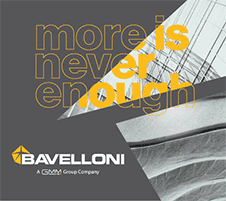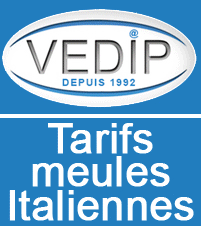DIGITAL PRINTING MACHINES
Introduction
The glass surface embellishment started very fast after this material discovering. The engraving, the sandblasting are very old technologies. After came screen printing. No immediately on glass ( Screen printing started first in Japan to carry out kimonos). 10 years ago, directly from wood industry arrived roller coating machines able to produce colored glass.
Few years ago
2004, Glasstec Dusseldorf. In a corner was a small booth, where a new company, DIP, introduced a printer able to print drawings or texts on a flat glass surface. At this step there was only 2 “colors” available: white and black. The booth was full during all the exhibition. Iit was a revolution because? for the first time, directly from a computer there was the possibility to draw everything on a glass surface in a very short time, with very good quality and low cost.
Why this technology arrived so late to glass industry, when it is already used for years on other markets? ( hollow glass, wood, leather, textile, plastic…).
Mainly for 2 reasons.
-The first one is the market size. The flat glass market is only few percents in touch with wood market.
-The second one is the glass surface characteristics : it is not easy to print on glass because
-The wet repulsion
-The surface smoothness
-The stiffness
These problems were solved by special inks design in addition with a treatment to fix the ink on or inside the glass ( but it is only the beginning and a lot of companies are working to improve the inks).
The machine
The machine is a printer with a table to support the glass and a printing head moving on X and Y and a small CNC to manage the printing parameters.
How are the machines working? Like an usual color printer. You work on a computer with a drawing software and the CNC drives the printing head to print directly on glass what you have designed on your computer. No need to have a skilled operator.
After printing, depending the products, you have to do a supplementary step ( UV, heat treatment…) to fix the printing on or inside the glass.
The inks:
The inks are a critical point. There are several types, UV inks, ceramic inks, organics inks, nano-components inks….. The ink type is strongly connected with the product end use
UV inks: the inks components can crosslink under a UV lamp forming a film on the glass surface. The quality is good and very well scratch resistant especially from dust. But the film formed by UV lamp is only on the glass surface and with sun, water or cleaning action tends to detach after some time. There are mainly organic inks. They don’t contain heavy metals or solvents. There are polymers and the chemical reaction is initiated by the UV lamp. But new UV inks are going to be introduced on the market, with an hardener able to improve the film resistance
Ceramics inks: It is a mixing of ground glass or ceramic plus organic or inorganic pigments. The print can be done directly on the glass or on a substrate and after transferred on the glass. During the high temperature treatment after printing, the small particles melt on the glass surface top. Here also the inks are in development, but more and more colors are available. The heat treatment can lightly change the colors.
Organics inks
-With solvents
The solvent help during printing and evaporate during the following step. Very often an hardener is present inside the mixture.
EVA for laminated glass : in this case the digital printer print directly on EVA film with special inks ( nano-componants ink ). You feed the digital printer with EVA roll ( up to 2,5 meters width) with vacuum system to guarantee the perfect planetary during printing, and sensors to manage the material thickness.
The markets
Glass digital printing machines really are creating new markets for flat glass
Digital printing on glass offers huge possibilities to introduce on the market very innovative products and solution with low costs.
For example: Gaming machines, advertising and communication, architectural, furniture, appliance; automotive…. . But the requirements are very different.
Gaming machine: For the screen, the keyboard… The inquiries are for water and alcohol resistance inks , few colors and transparence.
Advertising and communication
Mr Chiara, sales manager, from the Italian digital printer supplier Muchcolors explains
“Now it is possible to use glass as a paper sheet of our color office printer. Imagine what could happen if you choose a whatever image and if you could launch the printing command on your printer and you have in few minutes a glass panel with the image on it? It is a new and easy way for marketing adv. It is a new way to customizing interior for shops, buildings, exhibitions. It is the way to give a new dress to the ancient transparent glass. Now you can use your glass as a publicist use paper”
There are huge opportunities here for advertising campaigns ( during exhibitions, promotions, gifts, open days…), inside decoration shops ( with possibility to change fast and cheaply the decoration for a continuous animation inside the shop to attract and interest customers) or office ( reception area to promote the company image or products, partition walls.), to build attractive and original booths for exhibition. For all these “shorts terms” products UV inks are the right solution.
Architectural : all the screen printing can be competed by digital printing. For outside applications ceramics inks are often the proper answer.
Appliance: digital printing is a good answer to the market trend to colored products
The companies specialized in sandblasting can have here a perfect supplementary products to propose to their present customers
Comparison with screen printing:
The screen printing is not going to disappear but with digital printing:
-You don’t need special and specifics tools ( screens, stencils ), no storage ( square meters), no maintenance.
-You can supply the products required by your customer in a very short time ( you design on your computer , you print, you fix the printing)
-You don’t need skilled operators
-You can work directly from the digital files supplied by your customers
-You print multi-colors in only on time
-the cost are very low because there is not waste material, no cleaning operations, very low ink consumption ( about 10 g per square meter)
Conclusion:
Every company present on glass processing must have a look on this new technology because it is a great opportunity to develop the glass use for new markets with innovative products.
The recent regulations about chemical products ( no heavy metal or solvent), the environmental impact and the market inquiry for short term delivery and customized batches introduce a hard competition for the different process and inks available on digital printing market. The UV inks, if the scratch resistance and film durability are improved seems to be some steps ahead because the low temperature and fast curing and there are free of heavy metal and solvents.










